Each and everyone of us has his or her own tastes for Hollywood movies. For me, these are the first seven films I like in… random order.
First Blood (1982): Ted Kotcheff (Director), Sylvester Stallone, Michael Kozoll and the late William Sackheim (Screenplay)

Town sheriff Will Teasle (Brian Dennehy) does not welcome Rambo (Stallone) and orders him to leave town.
John J. Rambo (Stallone) is a former United States Special Forces soldier who fought in Vietnam and won the Congressional Medal of Honor, but his time in Vietnam still haunts him. As he came to Hope, Washington to visit a friend, he was guided out of town by the Sheriff William Teasel (Brian Dennehy) who insults Rambo, but what Teasel does not know that his insult angered Rambo to the point where Rambo became violent and was arrested, as he was at the county jail being cleaned, he escapes and goes on a rampage through the forest to try to escape from the sheriffs who want to kill him. Then, as Rambo’s commanding officer, Colonel Samuel Trautman (the late Richard Crenna) tries to save both the Sheriff’s department and Rambo before the situation gets out of hand.
This American psychological thriller action film was based on David Morrell‘s 1972 novel of the same name, it was the first of the Rambo series.

Rambo searches for one of his friends from his unit, Delmar Berry and ends up in the town of Hope, Washington.
Despite initial mixed reviews, the film was a commercial success. Since its release, First Blood became seen as an underrated, cult and influential film in the action genre. It spawned three sequels, all written by and starring Stallone, who also directed the fourth installment.
It raked more than $125 million worldwide against it budget of only $14 million.
Interesting Facts:
- Paul Newman, Ryan O’Neal and James Garner, Al Pacino, Michael Douglas, Nick Nolte, Jeff Bridges, John Travolta and Kris Kristofferson were considered to play John Rambo.
- Warner Bros. had considered to make the story with Clint Eastwood, Steve McQueen, Al Pacino, and Dustin Hoffman
- Gene Hackman was considered to play Sheriff Teasle and Lee Marvin and Kirk Douglas were considered for Col. Trautman’s part.
- “First Blood” was Sylvester Stallone’s first non-Rocky movie which didn’t bomb. In fact, it arguably saved his career.

Col. Sam Trautman (Crenna) explains to Teasle (Dennehey) that he trained Rambo, and that the Army sent him to “rescue” them
Interesting Lines:
Trautman: I don’t think you understand. I didn’t come to rescue Rambo from you. I came here to rescue you from him.
Teasle: Well, we all appreciate your concern Colonel, I will try to be extra careful!
Trautman: I’m just amazed he allowed any of your posse to live.
Teasle: Is that right?
Trautman: Strictly speaking, he slipped up. You’re lucky to be breathing.
Teasle: That’s just great. Colonel, you came out here to find out why one of your machines blew a gasket!
Trautman: You don’t seem to want to accept the fact you’re dealing with an expert in guerrilla warfare, with a man who’s the best, with guns, with knives, with his bare hands. A man who’s been trained to ignore pain, ignore weather, to live off the land, to eat things that would make a billy goat puke. In Vietnam his job was to dispose of enemy personnel. To kill! Period! Win by attrition. Well Rambo was the best.
Teasle: Are you telling me that 200 of our men against your boy is a no-win situation for us?
Trautman: You send that many, don’t forget one thing.
Teasle: What?
Trautman: A good supply of body bags.
This is my utmost favorite among all Rambo movies because I believe that the first one always measures success or failure.
Philadelphia (1993): Jonathan Demme (Director), Ron Nyswaner (Screenplay)
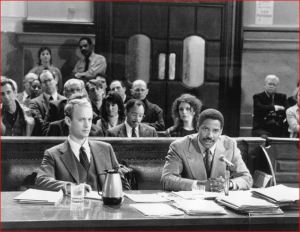
Andrew Beckett (Hanks) listens as Joe Miller (Washington) cross-examines a witness.
Andrew Beckett (Tom Hanks), a gay lawyer infected with AIDS, is fired from his law firm in fear that they might contract AIDS from him. After Andrew is fired, in a last attempt for peace, he sues his former law firm with the help of a homophobic lawyer, Joe Miller (Denzel Washington). During the court battle, Miller sees that Beckett is no different than anyone else on the gritty streets of the city of brotherly love, sheds his homophobia and helps Beckett with his case before AIDS overcomes him.
This American drama film and one of the first mainstream Hollywood films to acknowledge HIV/AIDS, homosexuality, and homophobia garnered a lot of awards. Hanks won the Academy Award [Oscars and Golden Globe] for Best Actor for his role, Nyswaner won Best Writing, Screenplay Written Directly for the Screen [Oscars] while the song “Streets of Philadelphia” by Bruce Springsteen won the Academy Award for Best Original Song [Oscars and Golden Globe].
With a budget of only $26 million, it grossed almost $207 million worldwide.
Interesting Facts:
- The home movies at the end which show Andrew as a child are real life videos of Tom Hanks in his childhood.
- Tom had to lose almost thirty pounds to appear appropriately gaunt for his courtroom scenes. Denzel, on the other hand, was asked to gain a few pounds for his role. Denzel, to the chagrin of Tom, who practically starved himself for the role, would often eat chocolate bars in front of him.
- The courtroom scenes were filmed in an actual courtroom that the city let the producers used. It was not a set.
- In the film, Denzel’s character says he prays that Philadelphia Phillies win the pennant. The year this movie was released, the Phillies did just that.
- Demme decided to record the opera scene live so Hanks could get a better performance with the music playing. This proved extremely tricky in the editing suite (music is usually added in post-production).
- Daniel Day-Lewis, Michael Keaton and Andy Garcia were all offered the role of Andrew Beckett.
- John Leguizamo turned down the part of Miguel Alvarez instead it went to Antonio Banderas.
- James Woods was considered for the role of Charles Wheeler but the late Jason Robards played the part.
Interesting Lines:
[Joe Miller is in court and has just asked his witness whether he is a homosexual]
Joe Miller: Are you a homo? Are you a queer? Are you a faggot? Are you a fruit? Are you *gay*, sir?
Librarian: Sir, wouldn’t you be more comfortable in a study room?
[Andrew looks up and sees people in the library staring at him]
Andrew Beckett: No. Would it make you more comfortable?
Joe Miller: What’s wrong with your face?
Andrew Beckett: I have AIDS.
Joe Miller: Now, explain it to me like I’m a four-year-old.
The movie Philadelphia is a truly amazing movie and touching story. It shows that no matter what, we have to stand for our rights even if the majority is against us.
Remember the Titans (2000): Boaz Yaki (Director), Gregory Allen Howard (Screenplay), Jerry Bruckheimer (Producer)
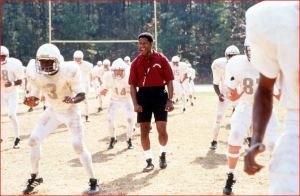
Coach Herman Boone (Washington) commands the drills of the racially integrated football team.
Suburban Virginia schools have been segregated for generations, in sight of the Washington Monument over the river in the nation’s capital. This film is is based on the true story of African American coach Herman Boone (Denzel Washington) as he tries to introduce a racially divided team at the T. C. Williams High School in the southern Virginia town of Alexandria, Virginia in 1971. One Black and one White high school are closed and the students sent to this High School under federal mandate to integrate. This 1971 football team became the unifying symbol for the community as the boys and the adults learn to depend on and trust each other. Former T. C. Williams High School football coach, Bill Yoast (Will Patton) was relegated as Coach Boone’s assistant but was instrumental in shaping the transition thus helping Boone. The real life portrayal of athletes Gerry Bertier (Ryan Hurst) and Julius Campbell (Wood Harris) appear within the harmonized story line.
This 2000 American sports drama film was considered a financial success due to its $30 million budget costs, it raked almost $137 million.
Interesting Facts:
- There is one scene in the film where a brick is thrown through Coach Boone’s window. In real life it was an old toilet that was thrown, but film makers thought this would add humor to the serious situation.
- In real life, Coach Bill Yoast has four daughters: Bonnie, Angela, Sheryl, and Deidre. Unlike in the film, all four daughters lived with their mother, Betty Yoast, after their parents divorced. Bonnie was in college, Angela went to a different high school, and Deidre was only 3-years-old in 1971, but Sheryl attended most of the games and other events with her father, so the filmmakers thought it would be distracting to depict the other three girls. While Bill Yoast was not happy about that, the sisters were fine with it and rather enjoyed the movie.
- Tourists often went to the real T.C. Williams High School after the movie was released, according to Sports Illustrated, and were very surprised that the real school does not look like the one in the movie. The movie was not filmed in Alexandria; it was filmed in various locations in Georgia.
Interesting Lines:

Coach Boone (Washington) contemplates before addressing his team at Gettysburg.
The best line of the film was when Coach Boone rounded up the boys at the place where the Battle of Gettysburg took place and addressed them with these lines that eventually united them as a team…
“This is where they fought the Battle of Gettysburg. Fifty thousand men died right here on this field, fighting the same fight that we are still fighting among ourselves today. This green field right here, painted red, bubblin’ with the blood of young boys. Smoke and hot lead pouring right through their bodies. Listen to their souls, men. I killed my brother with malice in my heart. Hatred destroyed my family. You listen, and you take a lesson from the dead. If we don’t come together right now on this hallowed ground, we too will be destroyed, just like they were. I don’t care if you like each other of not, but you will respect each other. And maybe… I don’t know, maybe we’ll learn to play this game like men“.
The Gods Must Be Crazy (1980): Jamie Uys (Producer, Screenplay & Director)
A Sho (the late Namibian San farmer Nǃxau) in the Kalahari desert encounters technology for the first time–in the shape of a Coke bottle. He takes it back to his people, and they use it for many tasks. The people start to fight over it, so he decides to return it to the God–where he thinks it came from. Along the way, he encounters a diverse assortment of people: school teacher, Kate Thompson (Sandra Prinsloo) assigned to a small village, a despotic revolutionary, Sam Boga (Louw Verwey), and a clumsy biologist, Andrew Steyn (Marius Weyers).

Xi (Nǃxau) is happy to be reunited with his two sons.
This South African comedy film that was financed only from local sources, was the most commercially successful movie in the history of South Africa’s film industry.
Based on nineteen reviews, The Gods Must Be Crazy has carried a 95% “Fresh” score on Rotten Tomatoes. It grossed over $60 million which is twelve times it budget.
Interesting Facts:
- N!xau was paid less than $2000 for his role as Xi, even though the film grossed over $100 million worldwide. Before his death in 1996, Jamie Uys gave N!xau $20,000 and a monthly stipend.
- The film ran for 532 consecutive days at the Oaks Theaters in Cupertino, California, setting a record for the longest uninterrupted run of any movie in Northern California. It was pulled only because the film reels fell into disrepair and a large section caught fire. After such a long run, replacing the reels was too expensive.
- The film was world’s biggest foreign box office hit during its release.
Interesting Lines:
The most amusing lines in this movie was made by the narrator when he said…
” But in the Kalahari, it’s always Tuesday, or Thursday if you like, or Sunday. No clocks or calendars tell you to do this or that“.
Die Hard (1988): John McTiernan (Director), Steven E. de Souza and Jeb Stuart (Screenplay), Lawrence Gordon and Joel Silver (Producers)
Off-duty New York City Police Department Detective John McClane (Bruce Willis) has just arrived in Los Angeles to spend Christmas with his estranged wife, Holly Genaro (Bonnie Bedelia). Unfortunatly, it is not going to be a Merry Christmas for everyone as a group of highly organized criminals led by Hans Gruber (Alan Rickman) performs a heist in the Nakatomi Plaza buildin under the guise of a terrorist attack using hostages, including McClane’s wife to keep the police at bay. With no way of anyone getting in or out, it’s up to McClane to stop all 12 of them.
This American action film was based on the 1979 novel Nothing Lasts Forever by Roderick Thorp. Made on a $28 million budget, Die Hard went on to gross over $140 million theatrically worldwide, and received a positive reception from critics.
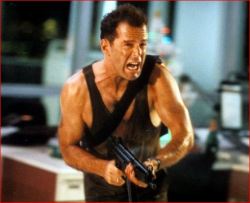
Det. John McClane (Willis) fights the bad guys in a scene from “Die Hard”.
The film garnered a 92% approval rating from 53 critics—an average rating of 8.3 out of 10—on Rotten Tomatoes and 70 out of 100 from 13 critics, which indicates “generally favorable” reviews from Metacritic.
The film turned Willis into an action star, and became a frequent comparison for other action films featuring a lone hero fighting overwhelming odds. The film’s success spawned the Die Hard franchise, which includes four sequels, video games, and a comic book.
Interesting Facts:
- 20th Century Fox was contractually obliged to offer Frank Sinatra the lead role in Die Hard, but he turned it down.
- The film was pitched as a sequel to the 1985 action film Commando starring Arnold Schwarzenegger but Schwarzenegger also turned it down. The film was pitched to, and rejected by, a host of the era’s action stars before Willis was chosen.
- 20th Century Fox did not have faith in Willis’ action star appeal, as at the time he was known for his comedic role on television.
- The Nakatomi tower is actually the headquarters of 20th Century Fox. The company charged itself rent for the use of the then unfinished building.
- Special, extra loud blanks were made for use in the film to add to the “hyper-realism” director John McTiernan was looking for. Unfortunately for Bruce Willis, some of these blanks were used for the scene where he kills a terrorist by shooting him through the bottom of a table where the terrorist is standing. The proximity of the gun to Willis’ ear during this scene caused permanent hearing loss for Willis.
- The scene where McClane falls down a shaft was a mistake by the stuntman, who was supposed to grab the first vent, as it originally was planned. He slipped and continued to fall, but the shot was used anyway; it was edited together with one where McClane grabs the next vent down as he falls.
- The line “Yippee-ki-yay, motherfucker!” is used in all Five Die Hard movies. The line was voted as the #96 of “The 100 Greatest Movie Lines” by Premiere in 2007.
- The scene where Bruce Willis and Alan Rickman meet up was unrehearsed to create a greater feeling of spontaneity between the two actors.
Interesting Lines:

McClane (Willis) confronts for the first time his nemesis.

Gruber (Rickman) aims his gun at McClane.
Interesting lines from this movie are between the main antagonist McClane (Willis) and main protagonist Gruber (Rickman)…
Hans Gruber: “Do you really think you have a chance against us, Mr. Cowboy?”
John McClane: “Yippee-ki-yay, motherfucker”.
Hans Gruber: [Hans’ radio turns on] “I thought I told all of you, I want radio silence until further…“
John McClane: “Ooooh, I’m very sorry Hans. I didn’t get that message. Maybe you should’ve put it on the bulletin board. I figured since I’ve waxed Tony and Marco and his friend here, I figured you and Karl and Franco might be a little lonely, so I wanted to give you a call“.
Saving Private Ryan (1998): Steven Spielberg (Director), Robert Rodat (Screenplay), Ian Bryce, Mark Gordon, Gary Levinsohn & Spielberg (Producers)
After the invasion of fortress Europe on June 6, 1944, United States Army Rangers Captain John H. Miller (Tom Hanks) leads his squad from the 2nd Ranger Battalion of the 29th Infantry Division and his squad (Tom Sizemore, Edward Burns, Barry Pepper, Vin Diesel, Giovanni Ribisi, Adam Goldberg and Jeremy Davies) as they set on a mission to find and bring home Private First Class James Francis Ryan (Matt Damon) after the death of his brothers. The mission takes them through Nazi occupied territory to establish contact with Ryan’s unit an element of the 101st Airborne Division. This exiting war thriller brings the reality of history’s bloodiest war into the homes of ordinary people, but also brings into light the reality of broken and lost families in a time of total and encompassing war.
This American epic war film set during the Invasion of Normandy in World War II is notable for its graphic and realistic portrayal of war, and for the intensity of its opening 27 minutes, which depict the Omaha Beach assault of June 6, 1944.

TSgt. Mike Horvath (Sizemore) and Cpt. John H. Miller of the (Hanks) of the 2nd Ranger Battalion, U.S. Army prepare to land on Omaha Beach at the beginning of the Normandy Invasion.
Saving Private Ryan has received critical acclaim for its realistic portrayal of World War II combat. In particular, the sequence depicting the Omaha landings was named the “best battle scene of all time” by Empire magazine and was ranked number one on TV Guide‘s list of the “50 Greatest Movie Moments”
The movie was a critical and commercial success and is credited with contributing to a resurgence in America’s interest in World War II. Old and new films, video games, and novels about the war enjoyed renewed popularity after its release.
The film received great critical acclaim as it grossed over $480 million. it was praised for its realistic battle scenes and the performance of the actors.

Cpt. John H. Miller (Hanks), PFC James Francis Ryan (Damon) and PFC Richard Reiben (Burns) defends the bridge from the elements of the 2nd SS Panzer Division.
The film was nominated for eleven Academy Awards, with wins for Best Cinematography, Best Sound, Best Sound Effects Editing, Best Film Editing, and Best Director for Spielberg, but lost the Best Picture. The film also won the Golden Globes for Best Picture – Drama and Director, the BAFTA Award for Special Effects and Sound, the Directors Guild of America Award, a Grammy Award for Best Film Soundtrack, the Producers Guild of America Golden Laurel Award, and the Saturn Award for Best Action, Adventure, or Thriller Film.
In June 2008, the American Film Institute revealed its “Ten Top Ten“—the best ten films in ten “classic” American film genres—after polling over 1,500 people from the creative community. Saving Private Ryan was listed as the eighth best film in the epic films genre.
Interesting Facts:
- Tom Sizemore was battling a drug addiction during production. Steven Spielberg gave him an ultimatum that he would be blood tested on the set every day of filming, and if he failed the test once he would be fired and the part of Horvath would be recast and re-shot with someone else, even if it was at the end of production.
- Two of the landing craft used in the Omaha Beach scenes were actually in use in World War II.
- All the principal actors underwent several days of grueling army training – except for Matt Damon, who was spared so that the other actors would resent him, and would convey that resentment in their performances.
- Steven Spielberg cast Matt Damon as Ryan because he wanted an unknown actor with an All-American look. He didn’t know Damon would win an Oscar for Good Will Hunting (1997) and become an overnight star before the film was released.
- Mel Gibson and Harrison Ford were both considered for the role of Capt. John Miller, before Steven Spielberg decided on casting Hanks while Neil Patrick Harris was considered for the role of Private Ryan.
Interesting Lines:

Cot. Miller (Hanks) informs PFC Ryan (Damon) the fate of his brothers.
The most interesting lines from the movie came when Cpt. Miller finally meets PFC Ryan…
Captain Miller: James Francis Ryan of Iowa?
Private Ryan: Yes, sir. Paton, Iowa, that’s correct. What is this about?
Captain Miller: Your brothers were killed in combat.
Private Ryan: Which – Which ones?
Captain Miller: All of them.
Gladiator (2000): Ridley Scott (Director), John Logan, William Nicholson, David Franzoni (Screenplay), David Franzoni (Story), Douglas Wick, David Franzoni, and Branko Lustig (Producers)
Victorious general Maximus Decimus Meridias (Russell Crowe) has been named keeper of Rome by its empire by dying emperor Marcus Aurelius (the late Richard Harris), so that rule might pass from the Caesars back to the people and Senate. Marcus’ neglected and power-hungry son, Commodus (Joaquin Phoenix), has other ideas, however. Escaping an ordered execution, Maximus hurries back to his home in Spain, too late to save his wife (Giannina Facio) and son (Giorgio Cantarini) from the same order. Taken into slavery and trained as a gladiator by Proximo (the late Oliver Reed), Maximus lives only that he might someday take his revenge and fulfill the dying wish of his emperor. The time soon comes when Proximo’s troupe is called to Rome to participate in a marathon of gladiator games held at the behest of the new emperor, Commodus. Once in Rome, Maximus wastes no time in making his presence known, and is soon involved in a plot to overthrow the emperor with his former-love Lucilla (Connie Nielsen), Commodus’ sister, after whom he lusts, and also the widowed mother of Lucius (Spencer Treat Clark), heir to the empire after his uncle, and democratic-minded senator, Gracchus (Derek Jacobi). Maximus gains fame as a gladiator and uses his celebrity to cause further damage to Commodus’ tenuous hold on the susceptible Roman people, hoping to inspire them to rediscover their lost values and overcome the corruption that is eating away at them. These actions prompt Commodus to square off mano a mano with Maximus in the Colisseum with the fate of Rome at stake.
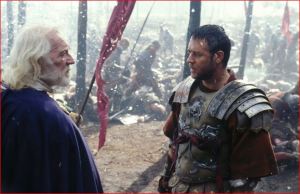
Emperor Marcus Aurelius (Harris) asks General Maximus Decimus Meridius (Crowe) to succeed him as a regent and turn Rome back into a republic.
This American-British epic historical drama film was a box office success, receiving positive reviews, and was credited with rekindling interest in the historical epic. The film won multiple awards, notably five Academy Awards in the 73rd Academy Awards including Best Picture and Best Actor for Crowe. The movie grossed over $450 million worldwide.

Commodus (Phoenix), desperate to kill Maximus and to restore his own glory, confronts Maximus (Crowe) before their arrange duel.
Gladiator received positive reviews, with 76% of the critics polled by Rotten Tomatoes giving it favorable reviews, with an averaged score of 7 out of 10. At the website Metacritic, which employs a normalized rating system, the film earned a favorable rating of 64/100 based on 37 reviews by mainstream critics.
The Battle of Germania was cited by CNN as one of their “favorite on-screen battle scenes”, while Entertainment Weekly named Maximus as their sixth favorite action hero, because of “Crowe’s steely, soulful performance”, and named it as their third favorite revenge film. In December 2000, Gladiator was named the best film of the year by viewers of Film 2000, taking 40% of the votes.
Interesting Facts:
- Maximus’ (Russell Crowe) description of his home (specifically how the kitchen is arranged and smells in the morning and at night) was ad-libbed – it’s a description of Crowe’s own home in Australia.
- As Oliver Reed died with three weeks of principal photography remaining and as he was considered a key character, a clause in the insurance coverage on the movie would have allowed the film-makers to shoot all of Reed’s scenes with another actor, with the insurers footing the cost (estimated at $25 million). However, most of the actors and crew were exhausted from the punishing schedule and Ridley Scott did not want to lose Reed from the movie, so the script was rewritten and CGI used to give Reed’s character a plausible resolution.
- In reality, Aurelius died of the plague and Commodus ascended to the throne. He was a much loved emperor by the army and the lower classes.
- During filming Russell Crowe became friends with Richard Harris. However, it was the opposite with Oliver Reed who took an instant dislike to Crowe and at one point challenged him to a fight.
- Connie Nielsen found the 2000-year-old signet ring which she wears in the movie, in an antique store.
- Russell Crowe was continually unhappy with the screenplay, rewriting much of it to suit his own ends. He would frequently walk off the set if he didn’t get his way. The famous line “In this life or the next, I will have my vengeance” he initially refused to say, telling writer William Nicholson “Your lines are garbage but I’m the greatest actor in the world and I can make even garbage sound good“.
- Jennifer Lopez auditioned for the role of Lucilla.
- In the original drafts of the script, the name of the main character was not Maximus, but Narcissus, the name of the man who killed Commodus in real life.
Interesting Lines:
The most interesting line in this movie was delivered by Commodus when he challenge Maximus to a duel to the death…
Commodus: The general who became a slave. The slave who became a gladiator. The gladiator who defied an emperor. Striking story! But now, the people want to know how the story ends. Only a famous death will do. And what could be more glorious than to challenge the Emperor himself in the great arena?
Maximus: You would fight me?
Commodus: Why not? Do you think I am afraid?
Maximus: I think you’ve been afraid all your life.




















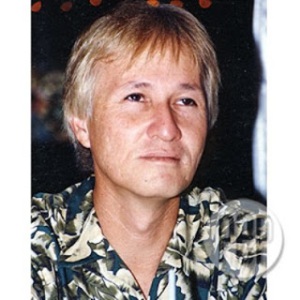
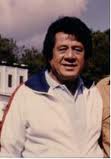

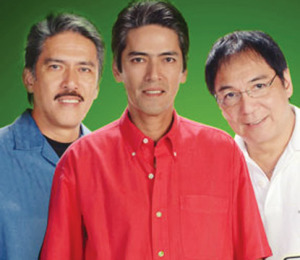


 Dolphy (Rodolfo Vera Quizon Sr.) was widely regarded as the”King of Philippine Comedy”, the heir apparent of Pugo.
Dolphy (Rodolfo Vera Quizon Sr.) was widely regarded as the”King of Philippine Comedy”, the heir apparent of Pugo.